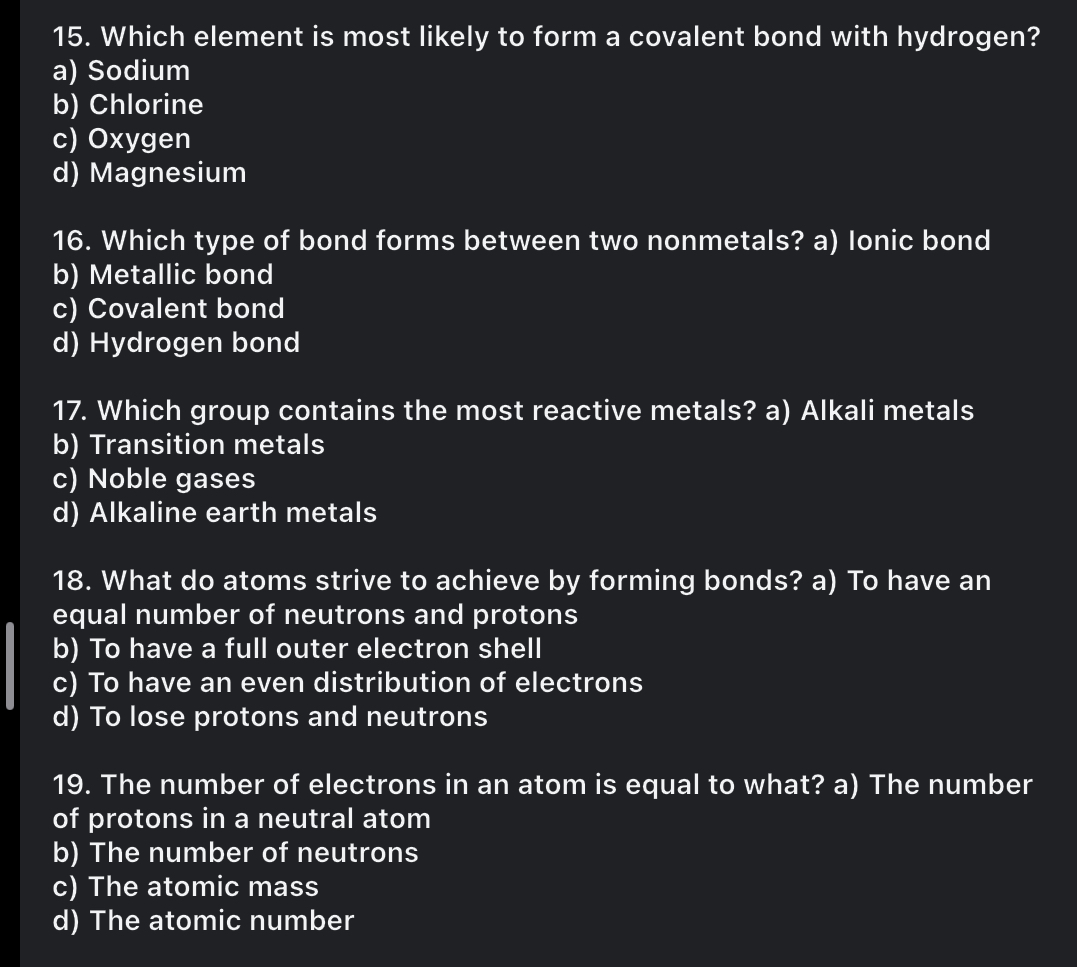1. Which element is most likely to form a covalent bond with hydrogen? 2. Which type of bond forms between two nonmetals? 3. Which group contains the most reactive metals? 4. What... 1. Which element is most likely to form a covalent bond with hydrogen? 2. Which type of bond forms between two nonmetals? 3. Which group contains the most reactive metals? 4. What do atoms strive to achieve by forming bonds? 5. The number of electrons in an atom is equal to what?

Understand the Problem
The image consists of multiple multiple-choice chemistry questions. The questions cover various topics, including covalent bonds, types of bonds between nonmetals, reactive metals, why atoms form bonds, and the relationship between electrons and protons in an atom.
Answer
15. Chlorine, 16. Covalent bond, 17. Alkali metals, 18. To have a full outer electron shell, 19. The number of protons in a neutral atom
- The final answer is Chlorine
- The final answer is Covalent bond
- The final answer is Alkali metals
- The final answer is To have a full outer electron shell
- The final answer is The number of protons in a neutral atom
Answer for screen readers
- The final answer is Chlorine
- The final answer is Covalent bond
- The final answer is Alkali metals
- The final answer is To have a full outer electron shell
- The final answer is The number of protons in a neutral atom
More Information
Nonmetals form covalent bonds with each other, alkali metals are the most reactive, atoms form bonds to have a full outer shell and in a neutral atom the number of electrons equals the number of protons.
Tips
Review the definitions of the different types of chemical bonds
Sources
- Chemical bonds | Chemistry of life | Biology (article) - Khan Academy - khanacademy.org
- Which elements form a covalent bond? - Quora - quora.com
- [PDF] Chemical Bonding and Molecular Geometry - web.ung.edu
AI-generated content may contain errors. Please verify critical information